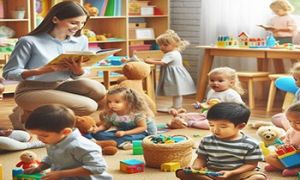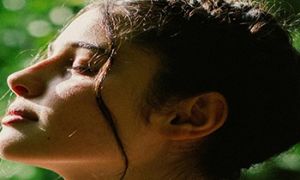Sustainability in early childhood education is an important part of the curriculum and should be incorporated into each and every service setting. Creating natural environments and proving natural materials in one way for sustainability to occur. This article will provide you with strategies on promoting sustainable education for educators and children and ideas on incorporating sustainable practices within the service.
What is Sustainability?
Sustainability is “environment education”. Learning about the environment and how natural systems function. It’s everything that we need for our survival and wellbeing relating directly to our natural environment.
Sustainable Education
Including composting, worm farms, gardening and providing a natural environment successfully engages children. However, these are only one of many ways we can teach sustainable development. As educators, we need to include education about and for the environment which may include:
For Children -
- Engage children in discussions about sustainable practices. Such as noticing how a garbage bin is full, how food and scraps left over after meal times etc.
- Encourage children to participate in a recycling program (recycling bins for cardboard, plastic and paper) or involve them in developing new strategies for recycling materials (using donated materials for art n craft or donating materials to council clean ups etc.)
- For older children, environmental issues such as drought or daily weather reports including updates on air quality and pollution levels should be discussed during morning group time or and a chart to record these findings should be made as visuals within the room.
- For Preschoolers, choose “Energy Savers” – responsible for noticing lights, fans and other appliances left on when not in use. Likewise, choose ‘Water Savers” – responsible for noticing taps left on and other wasted water.
For Educators –
- Develop appropriate policies and practices to promote environmental sustainability. This shows a service that is committed and willing to maintain environmental practices for the future. Start an “environmental audit” on the following areas:
- Water use
- Energy use
- Water minimisation and management
- Chemical use
- Biodiversity
- Purchasing
- Inside the entrance of centres, set up displays of sustainability messages that can be easily seen by families. Include locally relevant issues and information (local plants and wildlife, local bin colours and recycling systems etc.
- Create a Sustainability monthly newsletter or add a sustainability section to your current newsletter. Include actions the centre has done, educational experiences with the children, event/opportunities for parents.
- Develop an environmental calendar.
- Use a worm farm or composting bin to reduce food waste within the service. Encourage children to place food scraps into separate containers for use a worm farm/composting bin.
- Role model energy and water conservation practices (turning off lights and a/c when room not in use, emptying water play containers into gardens etc.) and explain its benefits.
- Purchase equipment that is eco-friendly and reduce amount of plastic used.
- Add sequence cards for turning off tap when hand washing.
- Buy books with environmental content to share with the children.
- Include “Sustainability” as a standing item in all staff meeting agendas.
Educators have the responsibility to make sustainable education a part of everyday practices, rather than a topic or theme to consider for a short time. It needs to be embedded within the curriculum and part of the day to day running of the service. Sustainability education, enables educators and children to promote a sense of responsibility, show respect for the natural environment, be active participants and bring about enquiry and social change.
Educators and children work together to learn about the environment and promote sustainable use of resources and to develop and implement sustainable practices (Element 3.3.1 – NQS).
Sustainable Practices in Childcare
The NQS states that services take an active role in caring for its environment and contributes to a sustainable future (standard 3.3). One of the ways this is achieved is by minimising waste, reducing energy and water consumption and using less toxins. Here are some ideas to ensure sustainable practices are embedded in service operations:
Waste
- Purchase only recycled paper towels and recycled toilet paper.
- Request local council to supply a green bin for garden organics.
- Purchase less paper, convert to electronic journals, email newsletters and re-use one sided paper.
- Re-use materials such as cardboard boxes, one side paper, shredded paper, bottle tops etc.
- Setup green trays in the craft area, for children to use one sided paper, scrap paper.
Water
- Teach and educate children on water saving (turning taps off, using half flush).
- Install a rain water tank for water play and gardening.
- Put mechanical timers on the children’s taps.
- Add mulching to gardens to reduce water needs.
- Repair leaks.
Energy
- Use a washing line to dry clothes rather than a dryer.
- Ensure all computers, printers, photocopiers, air cons and lights at the end of the day.
- Switch to compact, efficient globes.
- Only use air conditioner when natural ventilation is inadequate, closing doors and windows when on.
- Separate the lighting circuit for the nursery, change room and main children’s room, to turn on when necessary.
Toxins
- Switch to environmentally friendly products.
- Replace “Germex” on general surface and nappy change areas with hot soapy water and colour-coded micro-fibre cloths.
Green Cleaning in Childcare
Toxic chemicals can do harm to the environment and humans and ongoing use of these makes it increasingly harder for the environment to recover. Chemical based cleaning and sanitising products causes asthma, allergies and chemical sensitivities. An alternative to chemical based cleaning is to use natural/ green cleaning products. Here are some green cleaning ideas which can be used within the service.
- Benches - warm soapy water can remove bacteria on most surfaces. Use biodegradable and pH neutral soaps
- Floors - mop with hot/warm water, marks can be removed by using a rubber. Timber floors can be cleaned with cold black tea with a mop (use a damp mop only)
- Carpet - apply shaving cream to marks and spots, wash off with warm water. Mud and dirt marks, sprinkle with salt or bi-carb soda leave to dry them vacuum
- Sink - rub with bi-carb soda on a damp cloth
- Basin - rub with bi-carb soda on a damp cloth/vinegar on a cloth
- Toilets - white vinegar (mild disinfectant), add sprog of rosemary or lavender
- Windows and Mirrors - clean the windows vinegar and crumpled newspaper or paper towel to avoid black ink
- Tables, Walls, Ledges and Chairs - for paint or crayons – eucalyptus oil mixed with water, add a few drops of oil on a cloth and rub on stain directly. New rubber and toothpaste can also remove crayons
- Microwave and Fridge - clean exterior and interior with bi-carb soda on damp cloth
- Fridge Interior - use a few drops of vanilla essence in water, to new sponge helps to freshen up fridge. Place a small container of bi-carb into fridge to draw out any unwanted odours
- Alternative Disinfectants - 500ml white vinegar with 1 L of water. 15ml tea tree oil 5 ml spirit orange – mix and use for cleaning instead of disinfectant (effective for vomit, faeces, etc. (do not dilute further)
- Toys – hot soapy water, air-dry in sunshine
- Tea Towel/Bibs – soak in mix of 2 tablespoons of cream of tartar and 1L of water before washing
- Urine – soak white vinegar or lemon juice with water, after dry in sunshine
When using green cleaning ideas/recipes check for allergies and sensitivities with smells and scents from the children and their families. Ensure that oils and natural products are still kept out of children’s reach. Safe labelling on all cleaning items is required at all times and bottles should be labelled correctly.
The strategies within this article should be inspiration on how sustainable education and sustainable practices can be included into the service setting and within the curriculum to develop awareness of environmental issues. The aim is to provide children with the knowledge and skills to become environmentally responsible.
Reference:
- ECA Environmental Sustainability Policy
- Little Green Steps – Sustainability Education in Childcare Centres
- Greening Services: Practical Sustainability by Rachel Kinsella
- Putting Children First Issue 19 – Environmental Experiences
- Eco Resource Kit For Childcare Services – Uniting Care Gippsland


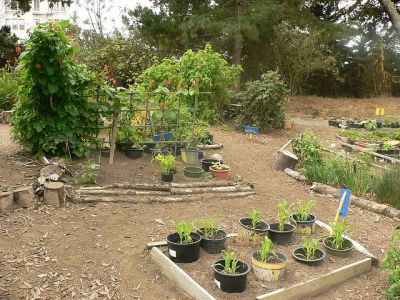
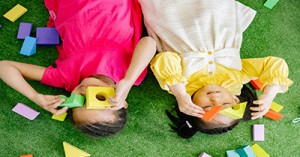
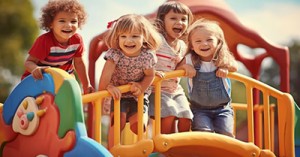


 As an Educator in Australia, your pay rate falls under the Children’s Services Award 2010. This award states the minimum amount that an employer can
As an Educator in Australia, your pay rate falls under the Children’s Services Award 2010. This award states the minimum amount that an employer can When working as a qualified Early Childhood Teacher (with a university degree) within a service, your rate of pay will come from the Educational Services
When working as a qualified Early Childhood Teacher (with a university degree) within a service, your rate of pay will come from the Educational Services When working as a Diploma Qualified Educator your pay rate is from the Children's Services Award 2010. This Award states your minimum rate of pay
When working as a Diploma Qualified Educator your pay rate is from the Children's Services Award 2010. This Award states your minimum rate of pay When working as a Cert 3 Qualified Educator, your pay rate is from the Children's Services Award 2010. This Award states your minimum rate of
When working as a Cert 3 Qualified Educator, your pay rate is from the Children's Services Award 2010. This Award states your minimum rate of Educational Leaders play a crucial role in their early childhood service by ensuring that the educational program aligns with best practices and supports the holistic
Educational Leaders play a crucial role in their early childhood service by ensuring that the educational program aligns with best practices and supports the holistic In early childhood education and care, ratios are more than a technicality—they are a frontline safeguard. Every child deserves responsive supervision, emotional connection, and developmental
In early childhood education and care, ratios are more than a technicality—they are a frontline safeguard. Every child deserves responsive supervision, emotional connection, and developmental With the new national child safety reforms kicking in on 1 September 2025, early childhood services like yours have a real opportunity to lead the
With the new national child safety reforms kicking in on 1 September 2025, early childhood services like yours have a real opportunity to lead the Here’s a comprehensive Mobile Phone and Smart Watch Policy tailored for early childhood education and care (ECEC) services in Australia, aligned with the latest 2025
Here’s a comprehensive Mobile Phone and Smart Watch Policy tailored for early childhood education and care (ECEC) services in Australia, aligned with the latest 2025 The Sea of Fish Challenge is a national initiative that invites children, educators, families, and communities to create and display fish artworks as a symbol
The Sea of Fish Challenge is a national initiative that invites children, educators, families, and communities to create and display fish artworks as a symbol Across the early childhood education and care sector, educators are sounding the alarm: current staffing ratios are insufficient to deliver safe, meaningful, and developmentally appropriate
Across the early childhood education and care sector, educators are sounding the alarm: current staffing ratios are insufficient to deliver safe, meaningful, and developmentally appropriate